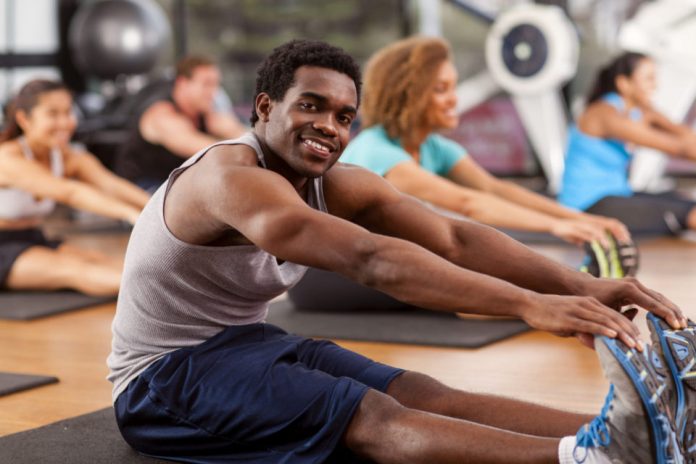Give your body time to prepare for movement and lessen the chance of injury
The biggest mistake most people make is skipping warm ups before their workout. Why is it so important? And how do you do it properly?
Most of us sit for long periods of time (or roll straight out of bed) before we exercise. Warming up is when we prepare our bodies mentally and physically to start moving. When we warm up, our brain shifts its attention to physical activity mode, joints move through their full ranges of motion, heart rate increases gradually instead of abruptly, muscles practice movements to come and the likelihood of injury decreases.
The three main activities—resistance training, cardiovascular exercise and sports—all require different types of warm up. To be most effective, warm-up movements should change based on the activity you’re about to do. Warm up for one to three minutes before activity and perform each warm-up move five to 10 times.
Resistance training. Use dynamic stretches instead of static stretching, and do them in a slow, controlled way. Ankle rolls and arm circles are examples of dynamic stretches.
Cardiovascular exercise. Most people view cardio itself as a warm up. But you shouldn’t jump right into the activity. Before running, biking, swimming or climbing on the treadmill, ease into the activity. Bring your heart rate up steadily instead of abruptly. Use dynamic stretching to signal your body what’s to come. Torso rotations, shoulder rolls, hip circles and high-knee marches are examples of dynamic stretches to do before cardio.
Sports. Start with dynamic stretches—lunges or squats—and then move into ballistic stretching (bouncing movement such as jumping jacks or hopping). For sports such as tennis, golf and softball, rotate your torso without weight to warm up. For basketball, you can hop after you warm up with movements such as ankle rolls, high-knee marches and lunges. Think about the movements the sport requires and mimic those before you begin. Once you start playing, your mind will focus on performance and movement will be on autopilot. Focusing on the movements and muscles before you play gives your joints a taste of what is to come and creates motor patterns or muscle memory useful for your brain.
Save static stretching—holding a stretch for 20 to 30 seconds and sometimes forcing a limb into a position—for after your workout because it signals your muscles to relax instead of activate.






